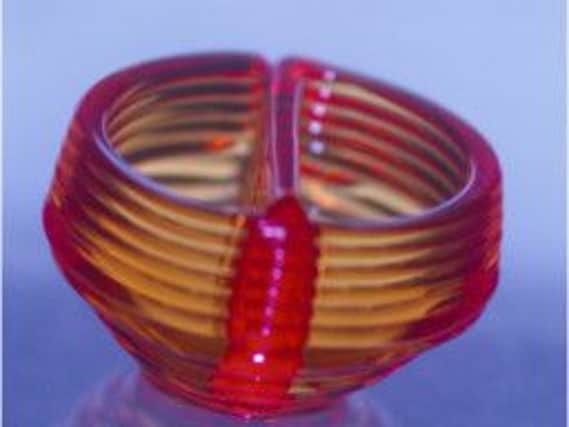3D printer to build a human heart


While it could be decades before a 3D-printed heart is put in a person, the technology is not all that futuristic.
Researchers have already used 3D printers to make splints, valves and even a human ear.
Advertisement
Hide AdAdvertisement
Hide AdStuart Williams, a cell biologist leading the project at the University of Louisville, said the team has printed human heart valves and small veins with cells.
They have also successfully tested the tiny blood vessels in mice and other small animals, he said.
The biggest challenge is to get the cells to work together as they do in a normal heart, said Mr Williams, of the Cardiovascular Innovation Institute, a partnership between the university and the Jewish Hospital in Louisville, Kentucky.
However, he believes they can assemble a heart in three to five years.
The finished product would be called the “bioficial heart” – a blend of the natural and the artificial. An organ built from a patient’s cells could solve the rejection problem some patients have with donor organs or an artificial heart, Mr Williams said.
He added that the heart might be tested in humans in less than a decade.
The first patients would most likely be those with failing hearts who are not candidates for artificial hearts, including children whose chests are too small for an artificial heart.
Mr Williams said the heart he envisions would be built from cells taken from the patient’s fat.
Advertisement
Hide AdAdvertisement
Hide AdBut difficulties remain, including understanding how to keep manufactured tissue alive.
“With complex organs such as the kidney and heart, a major challenge is being able to provide the structure with enough oxygen to survive until it can integrate with the body,” said Dr. Anthony Atala, whose team at Wake Forest University is using 3D printers to attempt to make a human kidney. The 3D printer works in much the same way an inkjet printer does; with a needle that squirts material in a predetermined pattern.
The cells would be purified in a machine, and then printing would begin in sections, using a computer model to build the heart layer by layer.
Mr Williams’ printer uses a mixture of a gel and living cells to gradually build the shape.
The technology has already helped in other areas of medicine, including creating sure-fitting prosthetics and a splint that was printed to keep a child’s airway open.
Doctors at Cornell University used a 3D printer last year to create an ear with living cells.
“We’re experiencing an exponential explosion with the technology,” said Michael Golway, president of Louisville-based Advanced Solutions Inc, which built a printer being used by Mr Williams’ team.